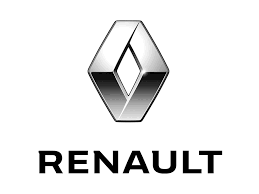The use of simulation at Renault is a strategy that goas back to several decades ago. Introduced initially in the fields of mechanics with, among other things, the method of finished elements, today the different types of digital simulations are at the heart of the design. They have replaced the majority of physical tests, resulting in reduced time to market and a cost savings of resources to be implemented. As part of the driving simulation, the SCANeR platform is the central element. Renault develops its industrial process of designing and validating the driving assistance electronics as well as autonomous driving.
CHALLENGE
Make driving simulation the AD/ADAS design and validation tool.
SOLUTION
Use the aperture and modularity of the SCANeR platform to build a continuous chain of testing and validation tools.
NEXT STEPS
Implementing SCANeR’s execution capabilities in cloud and HPC environments. The goals are multiple: generating and unrolling as many scenarios as possible to cover as many kilometres as possible in a minimum of time. Ensuring the reproducibility of the tests, efficiently manage the data generated so that we can return to the teams in-house and robust our designs.
BENEFITS
The porcess set up around SCANeR allows Renault to complete 500,000 virtual kilometers per day, and 10 million virtual kilometres in 21 days. Simulation allows for activities that were simply not possible until then.
“SCANeR ensures not only continuity throughout the V-cycle, but also allows scenarios to be unrolled on a massive simulation platform (HPC) or on a driving simulator.””
When Renault decided to use driving simulation not as a validation tool but as a design tool, it was necessary to make a choice. The tool had to be open, modular, capable of supporting the ramp-up and be used throughout the development cycle. For example, modularity is not a coquettishness, for historical reasons, Renault uses its own dynamic model of vehicle. It was therefore necessary to be able to “unplug” the dynamic model of the simulator and replace it with another. With this in mind, after studying the market, Renault decided to turn to AVSimulation, its SCANeR simulation platform and its driving simulators.
In addition to the software being used for functional architecture, the function of the tested system and the expected at the end of the process, the essential element of these tests is the ecosystem in which they are performed. Also, the test plan cannot start without an ecosystem being defined. The latter depends and varies depending on the position along the design cycle. During testing, SCANeR creates and combines different scenarios. Basically, a scenario consists of a particular situation (a motorway entrance, emergency braking, overtaking…) and about one kilometre of road. Combining different scenarios makes them complex and allows us to study the behaviour of the automobile in a more realistic environment.
During the simulations, if one of the expected one is not respected then one or more alarms are raised. They allow to highlight the simulations for which problems have been encountered: braking distance too long, the vehicle leaves its lane of traffic for no apparent reason … The results are then analyzed, the behavior of the electronic assistance adjusted and the simulation replayed. Once this simulation-correction-replay phase gives satisfaction, the driver is put back into the loop. It is then necessary to verify on a driving simulator that the behaviour of the system corresponds, in fact, to the expectations of the driver, both at the reaction level and at the level of acceptability of the ergonomics of the systems. The possibility of being able to use the same SCANeR platform on a driving simulator as in a massive simulation platform is, in this context, a determining factor.
Indeed, in order to accelerate the simulation-correction-replay cycle, it runs on a massive simulation platform. This is one of the advantages of the SCANeR platform because it is “HPC ready” and is, among other things, compatible with Microsoft’s Azure cloud.
Finally, it may not be unnecessary to go back to two points that really allow economies of scale. Indeed, the fact that the SCANeR platform encourages the use and reuse of the same scenarios at different stages of the V-cycle, in different ecosystems (MIL, HIL, VIL…) and on various execution platforms (cloud or driving simulator) allows to invest and capitalize on a catalog of scenarios. Second, the fact that the SCANeR platform is truly open makes it easy to connect to other environments and/or to co-simulate easily.
Renault puts the customer at the heart of its strategy. The satisfaction of the latter is therefore his priority. In this context, the driving simulation associated with the simulation allows the user to be at the center of the design and validation of the various systems of the vehicle: does he understand them? do they have any special value in his eyes? Are they well accepted, well used?…
The collection of data that is representative of reality is of crucial importance. Indeed, a system that is not understood by the driver, is not used and it automatically loses its value. In addition, we are heading towards the inflection point where semi-autonomous vehicles will become 100% autonomous. In this context, the study of user behaviour and acceptance is part of the keys to a smooth transition.

